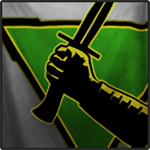 MischiefSC, on 09 September 2017 - 12:56 PM, said:
MischiefSC, on 09 September 2017 - 12:56 PM, said:
On another topic the viability of LRMs vs direct fire came up again, as it often does.
So not wanting that argument in this thread. I want to set up a test. 2 teams, one using LRMs (in whatever capacity) the other only direct fire. The LRM team decides if it's 8v8 or 12v12 and picks the map. If at all possible the LRM team builds first and the direct fire team tries to build at an approximate player skill level. However both teams need to be comprised of "good" players - people who can perform at a high level in a team.
Then we have a best out of 3 or best of 5. Shooting for early October to ensure scheduling.
Matches need recorded and posted by 1 person on each team.
I'm game with reasonable limitations on how many countermeasures get brought - I'm thinking max 50% of direct fire team can have AMS, max 3 ECM but whatever seems reasonable.
The goal is to determine if LRMs can perform comparatively to direct fire in a match between two teams of skilled players, regardless of map.
Not trying to start an argument here just test the actual performance in a reasonable test environment.
Any volunteers for putting together the LRM team? Again, not wanting to start an argument. Just want to test the relative performance of LRMs (in whatever capacity, be that 2 or 12 LRM mechs on the team) vs a dedicated direct fire team on any map, whatever team would be seen as best for the use of LRMs.
So who's game?
what I have noticed is what LRMs are used for or rather what advantages LRMs leverage evolves with player skill.
At lower tiers LRMs use is mostly as a damage dealing weapon used to spam missiles at targets and bury them under heaps of ordnance. Hence the use of asault class lurmboats in tier 4 and 5.
In the lower tiers LRMs are punishing to players who make mistakes like stray to far from cover or try to charge a lurmer from to far out or for pilots who over commit to a perceived 1 v 1 but end up LRMed into the dirt while brawling.
At this skill level it's all about launching huge clouds of missiles at targets to exploit a mistake before the target can rectify the mistake. We see stuff like LRM Kingcrabs or Stalkers.
But,as skills improve fewer mistakes occur and the windows of opertunity to exploit the now rarer mistakes are smaller. More experienced players have learned how to avoid getting splattered by LRMs and now the LRM users need to create opertunities to land hits. Gone are the days of sitting an an assault mech behind cover all match lobbing piles of rockets at noobs.
Yet still many LRM users are using their LRMs strictly for dealing damage without fully grasping the unique nuances of what indirect fire brings to a match.
At this point LRM boats are generally slimmed down to heavy mechs or faster assault mechs. There is a higher demand on mobility since now a LRM boat needs to make opertunities and the windows to exploit mistakes are smaller. We see more Catapults and LRM Timberwolves and Night Gyrs at this level than Stalkers and Kingcrabs.
Now at higher tiers LRMs are probably the least efficient weapon system for strictly dealing damage. Most players have developed enough aptitude by now to have a solid grasp on anti LRM tactics so the targets are harder to nail down and hold locks on long enough to kill them. Even fewer mistakes are available to exploit so a LRM user needs even more mobility to be ready with mobile ranged support damage.
LRM boats are now more mixed loadouts or faster dedicated LRM chassis. At this point we start seeing mechs like Maddogs and Kintaros or other medium mechs used for LRM support along with assault mechs with some ATMs and LRMs with some decent direct fire suplimental weapons as well.
At the highest levels of LRM profeciency the player has come to realize it's no longer ONLY about damage dealt it's about map control,supression and disruption.
New techniques are developed such as cycle locking and firing at several targets to give the enemy pilots the impression that all of them are the LRM boat's primary when in fact the LRM boat is cycling through locks and launches as quickly as possible just to keep their heads down. There is no attempt to kill anything just keep them supressed.
Supporting fire or disruptive fire is used far more often.This would be when a LRM user applies damage to a target for the express purpose of messing with their concentration and aim to aid a team mate under fire.
And of course map control. This is similar to supression fire but aimed at keeping the enemy from gaining access to an important map feature or terrain.
The expert level LRM user is rotating through several developed tricks to exert a psychological impact on the enemy as well as softening targets and finishing off severely damaged mechs.
So essentially the idea of this competition is sort of flawed from it's inception because the assumption is that LRMs are just damage dealing weapons and not also psychological warfare tools. Tools that specificly become a weakness in a teams composition IF there are not also enough dedicated damage dealing mechs to exploit the psychological effects applied by clever LRM use.
Basicaly if you have more than a pair of LRM mechs at higher tiers and if your normal bread and butter line holder/fighting mech slots are also occupuied by dedicated LRMs there isn't enough firepower to exploit advantages LRMs may leverage.
So I advise against more than two dedicated LRM carriers and those two should not be assault mechs or even heavies.(with occational exception for exceptional pilots or particular chassis with decent quirking)
 Ruar, on 09 September 2017 - 07:08 PM, said:
Ruar, on 09 September 2017 - 07:08 PM, said:






























